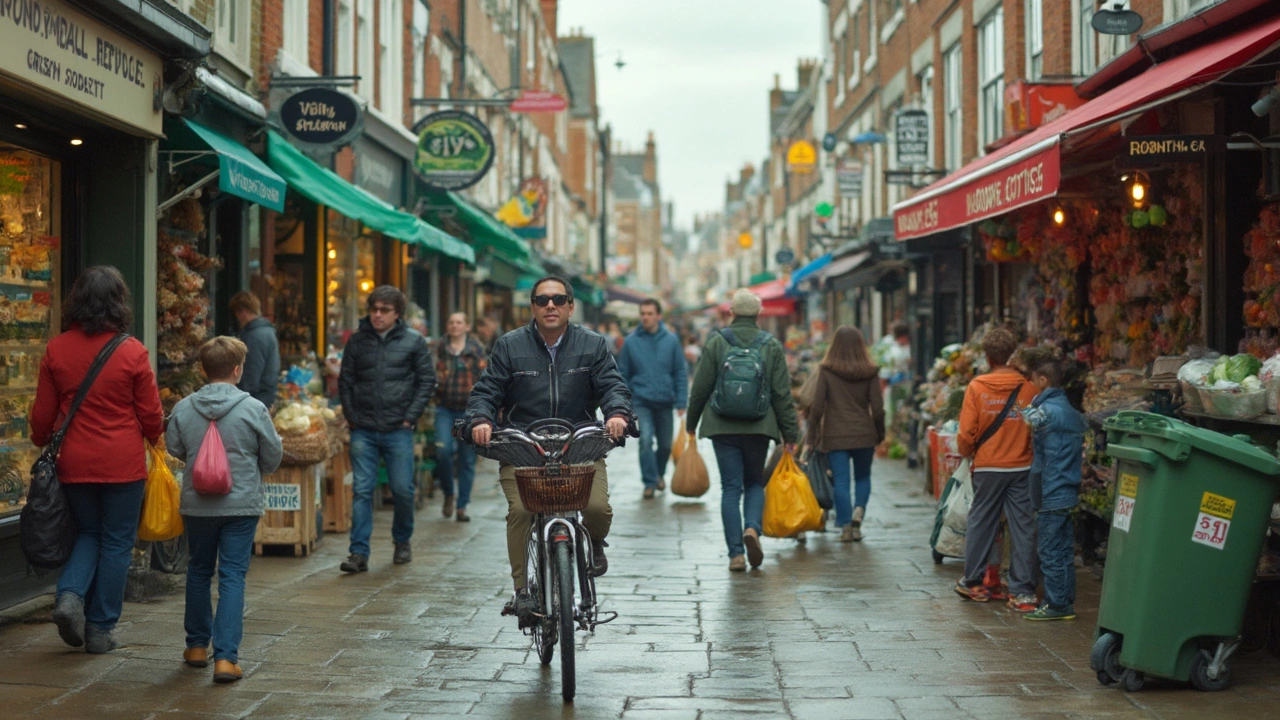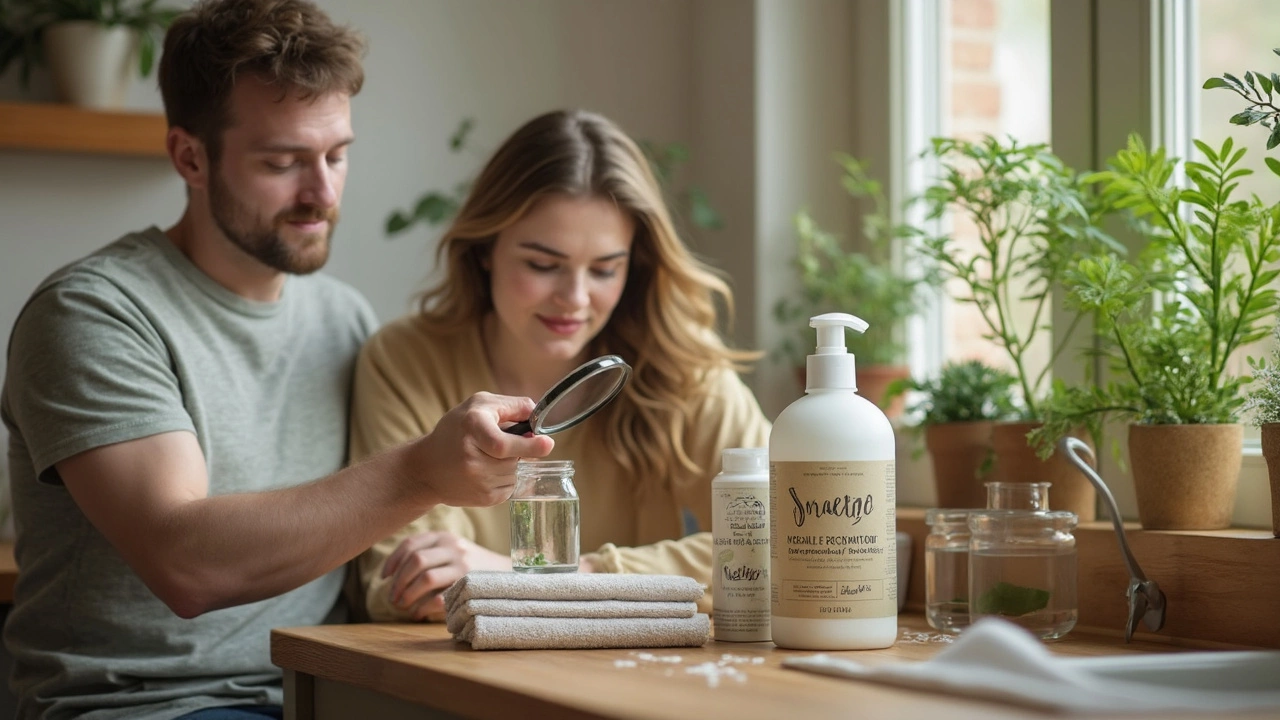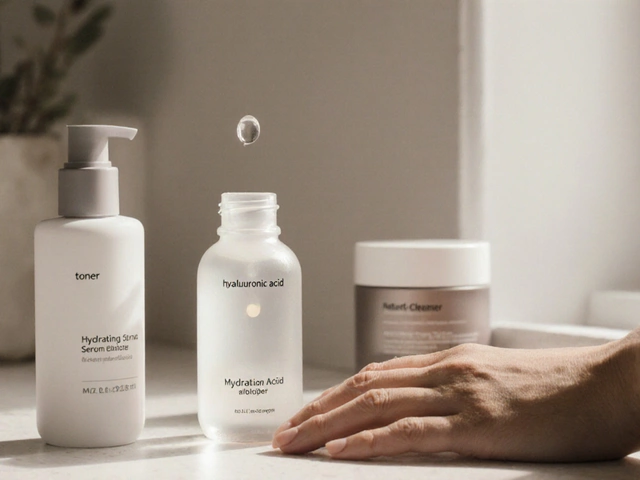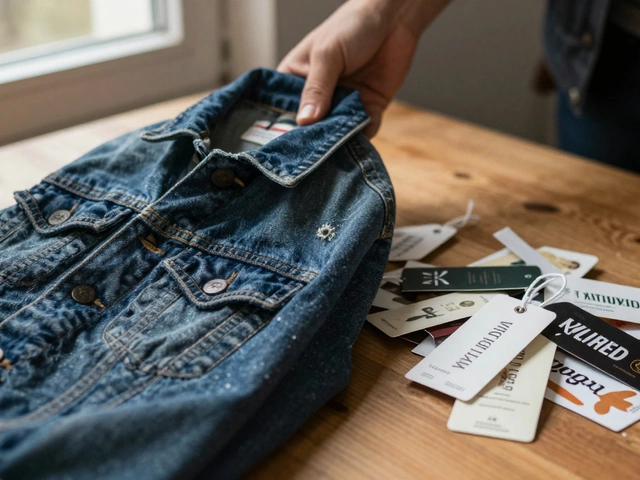If you’ve ever tried to swap every single thing in your home for an eco-friendly version, you’ve probably noticed it’s almost impossible. There’s always something—maybe the packaging, maybe a tiny label stuck on with mystery glue—that isn’t quite as green as it claims. Even so, going for 100% eco-friendly doesn’t have to be all-or-nothing.
Instead, the smartest move starts with the stuff you actually use all the time. Think: reusable water bottles instead of endless plastic ones, cloth grocery bags you stash everywhere so you don’t forget, and basic swaps like bamboo toothbrushes. When my kid Indigo broke their favorite school pencil, we found a recycled one that’s just as sturdy and writes just as well. Real change comes from these repeat habits, not from tossing everything out and buying a new ‘sustainable’ version of every product today.
- Is 100% Eco-Friendly Possible?
- Everyday Choices That Matter
- Green Products That Actually Work
- How to Spot Greenwashing
- Small Steps, Big Difference
Is 100% Eco-Friendly Possible?
The short answer? Not really. Even the most committed eco superstar can’t get a perfect score, and honestly, that’s okay. The planet isn’t asking for us to be robots—it’s about doing better, not living in a guilt spiral every time you buy something wrapped in plastic.
Here’s the thing: almost everything, from so-called green cleaning spray to electric cars, has some impact along the line. The making, shipping, and even the end of life of any product leaves a footprint. According to the 2023 Global Sustainability Report, even renewable energy products use resources and create emissions during production.
Check out these facts that put things in perspective:
| Product | Eco Label | Hidden Impact |
|---|---|---|
| Reusable Cotton Tote | Organic Cotton | Needs to be used 131+ times to offset making it (BBC study) |
| Solar Panel | Energy Efficient | Mining for minerals causes pollution |
| Bamboo Toothbrush | Compostable Handle | Bristles usually made of nylon (not compostable) |
This isn’t to say you shouldn’t try. The goal with eco-friendly living is inching closer to zero waste, not aiming for complete perfection. When it comes to products, always ask: can I reuse what I already have, or pick something with a smaller footprint?
- Start by switching things you use the most—those daily habits add up quick.
- Don’t stress about the last 10%; focus on steady progress, not every tiny detail.
- Be skeptical of anything claiming to be 100% eco—always dig deeper before you buy.
Trying to be totally eco-friendly isn’t a contest. It’s about making intentional choices that add up over time. Even small wins each day do a lot more for the planet than chasing some impossible, perfect green lifestyle.
Everyday Choices That Matter
The little stuff you do every day has a way bigger impact than any once-a-year eco challenge. For starters, single-use plastics are everywhere. Swapping out the obvious stuff—like water bottles, sandwich bags, and straws—for reusable options means you end up tossing way less in the trash. Not fancy, but incredibly effective.
Think about food, since it’s a huge part of daily routines. Buying local produce not only cuts down on carbon emissions from shipping but usually gives you fresher food too. Research from the Environmental Protection Agency says that about 24% of U.S. landfill waste is food scraps and leftovers. That’s wild, right? Composting at home can turn kitchen waste into something helpful for your plants, cutting your landfill footprint massively.
Let’s talk about stuff you clean with. Regular cleaning products are loaded with chemicals and come in throwaway plastic bottles. Grabbing eco-friendly brands in refillable containers—or even making your own all-purpose spray with vinegar and water—hits two birds with one stone: less waste, safer home. And don’t forget laundry. Washing in cold water saves energy, and running full loads helps save water.
If you’re eyeing the main ways your choices stack up, check out this real-life snapshot:
| Habit Swap | Waste Reduced Per Year* | Potential Savings |
|---|---|---|
| Reusable Grocery Bags | 300+ plastic bags | $30 |
| Composting Food Waste | 90 lbs organic waste | Better soil (priceless!) |
| Cold Water Laundry | Up to 500 lbs CO2 | $60 electricity |
| Refill Cleaning Supplies | 60+ bottles | $50 |
*Numbers are averages from US households, and they really add up.
The big point: picking just a few of these eco-friendly swaps and building them into your routine leads to real change over time. You don’t need a perfect record. Consistency trumps perfection every time.

Green Products That Actually Work
People throw the word “eco-friendly” around so much these days, it’s easy to wonder which products actually deliver, and which ones are just riding the trend. If something’s really green, it saves resources, lasts longer, and doesn’t just end up in the trash faster than the non-green version.
- Eco-friendly cleaning sprays: Look for plant-based cleaners that skip fake scents and harsh chemicals. Brands like Seventh Generation and Ecover really break down grime without dumping weird stuff into the water system.
- Reusable food wraps: Beeswax wraps actually keep food fresh, and you just rinse and use them again. Way less plastic, simple, and my son Indigo hasn’t complained (which is a win in my book).
- LED bulbs: Not glamorous but swapping out old lights for LEDs uses up to 80% less energy, and they last years longer. Imagine having to buy bulbs about once a decade, instead of yearly.
- Solid shampoo bars: They work. They’re easy to store and ditch all that plastic bottle waste. Try Ethique or HiBAR if you want ones that don’t leave your hair feeling weird.
- Compost bins for the kitchen: Countertop versions from brands like Bamboozle are easy to clean and actually control food smells. Sending scraps to a compost pile instead of a landfill really adds up—food scraps are around 30% of household trash.
| Product | Waste Reduced | Average Years of Use |
|---|---|---|
| LED Bulb | ~10 bulbs | 10 |
| Beeswax Wrap | ~200 plastic bags | 1-2 |
| Solid Shampoo Bar | ~3 plastic bottles | 0.5 |
Don’t assume every “green” product is perfect, though. Some so-called compostable plastics only break down in industrial composting sites, not your backyard pile. Do a quick check before you buy: Is it reusable, does it actually last, and is there solid info behind their claims?
How to Spot Greenwashing
You’ve probably seen labels that brag about being “natural,” “eco,” or “green” but don’t actually mean much. That’s greenwashing—when companies make products look more environmentally friendly than they really are. It’s everywhere, especially with eco-friendly products, so learning to spot it saves you money and helps the planet for real.
First, check the packaging for real proof. Legit green products usually have certifications like the USDA Organic, Fairtrade, or Energy Star logos. If you only see made-up brands or fake seals that you’ve never heard of, that’s a big red flag. Real certifications can be checked on the certifier’s official website.
Watch out for vague terms. If something says it’s “sustainable,” “non-toxic,” or “clean” but doesn’t explain how or give details, there’s probably not much behind it. These words are easy to slap on a bottle without following any real rules.
- Look for full ingredient lists, not just buzzwords.
- See if the company actually shares info about their supply chain, how the product is made, or if they report on their emissions and waste.
- Check the packaging—plastic “green” bottles aren’t helping if they’re just regular single-use plastic in a leafy design.
And here's a big one—if the brand claims to be “zero waste” or “carbon neutral,” do they back it up? Some companies set offset goals but won’t say how they’ll reach them, or they buy cheap carbon credits without changing their day-to-day business. Transparency here matters.
A good tip: search the brand online with the words “sustainability report” or “environmental impact.” If nothing comes up, or the info is all marketing fluff, look elsewhere. You want straightforward numbers and real plans, not just pretty photos of forests.

Small Steps, Big Difference
Most people don’t overhaul their whole life overnight, and that’s fine. Focusing on little changes is how real progress actually sticks. Let’s be honest: one person going zero-waste might seem like a drop in the ocean, but when thousands make tiny tweaks, it adds up fast.
Here’s the thing: the eco-friendly lifestyle isn’t just about buying the right stuff. It’s also about making simple shifts in everyday habits. For example, swap just one meat-based meal a week with a plant-based recipe. The World Resources Institute says if everyone in the U.S. did this, it would be like taking 16 million cars off the road for a year. That’s no joke.
- Use cold water for laundry. Energy Star found about 90% of the energy used in washing goes to heating the water.
- Turn off gadgets when you’re not using them. "Phantom power" can account for 5-10% of home electricity use, according to the Department of Energy.
- Start composting scraps, even in a small kitchen bin. It can lower food waste and returns nutrients to the soil if you have a garden.
- Choose products with less packaging, or better yet, shops that let you refill your own containers.
My son, Indigo, and I tried a "jar challenge"—see how much trash we could fit in a single jar for a week. It was an eye-opener. Lost a lot of snack packaging battles, but hey, even noticing the problem helps you slowly change your habits.
If you think you are too small to make a difference, try sleeping with a mosquito. – Dalai Lama
Even the smallest action cuts down your footprint. Swapping single-use coffee cups for a reusable mug can prevent hundreds of cups from hitting the landfill each year. The Break Free From Plastic movement found that single-use plastic items are still a major pollution problem everywhere, especially bottles and wrappers.
| Simple Swap | Annual Impact (per person) |
|---|---|
| Reusable water bottle | Saves 156 plastic bottles |
| Cloth grocery bag | Keeps 500 plastic bags out of landfill |
| Meat-free Monday | Reduces carbon footprint by 135 kg CO2 |
| Compost food waste | Diverts 120 kg of waste |
The trick is to keep these small steps up every day. One change might not seem huge, but stick with it. Before you know it, you’ve inspired people around you to do the same—kids, neighbors, coworkers. And that’s how a few little tweaks go from "just me" to shifting what whole communities expect.










